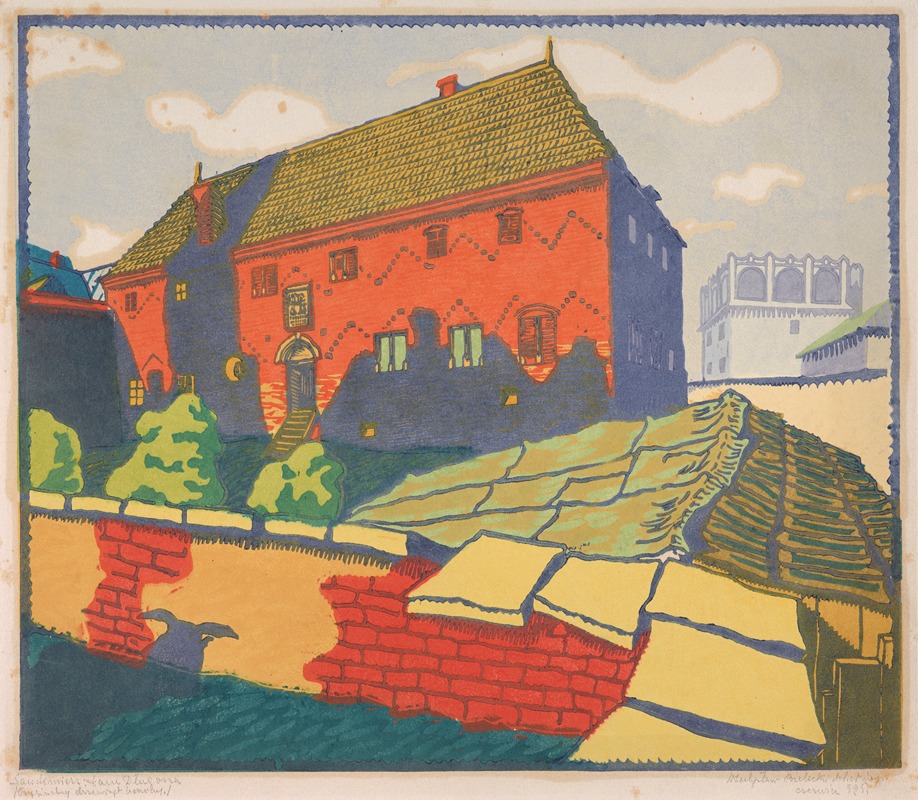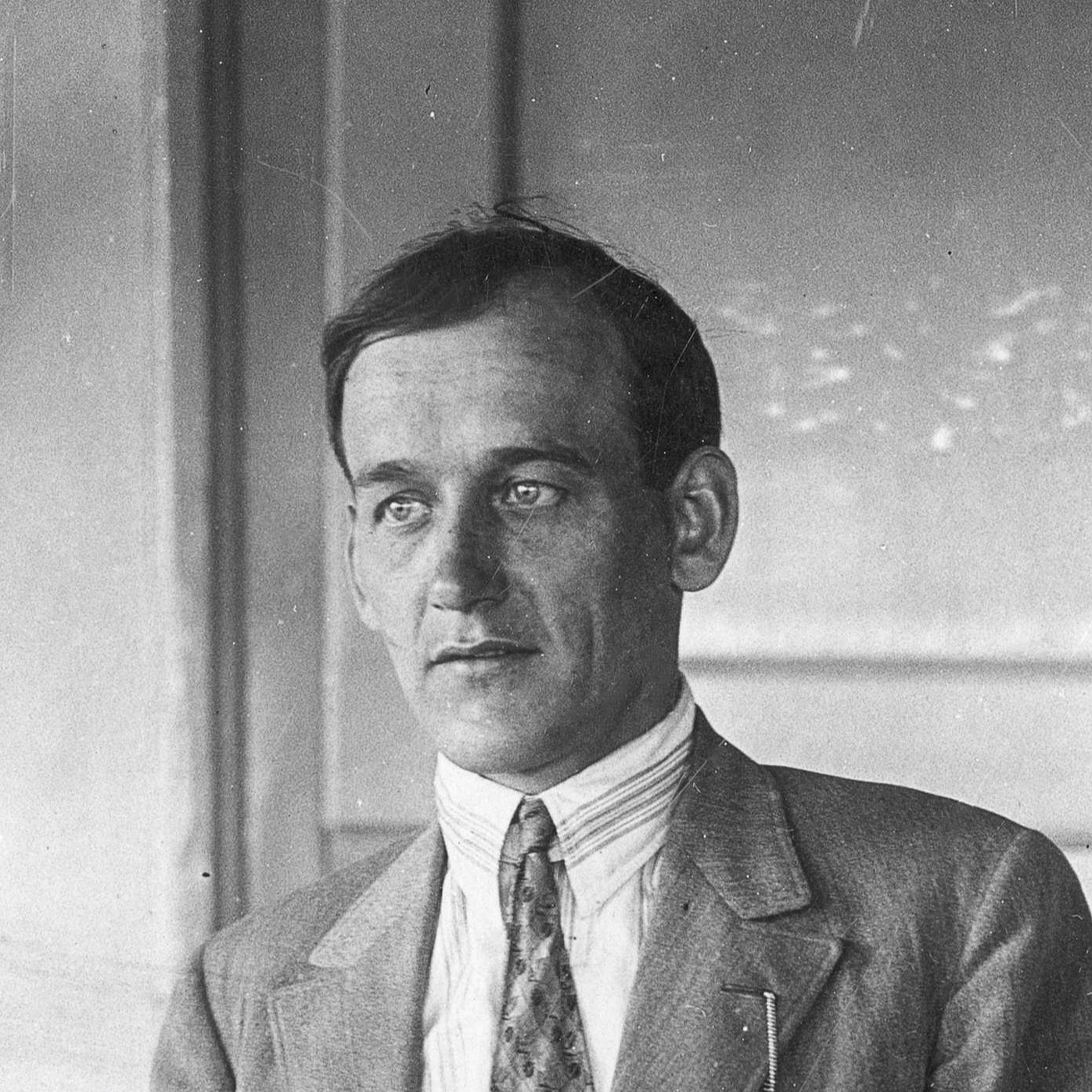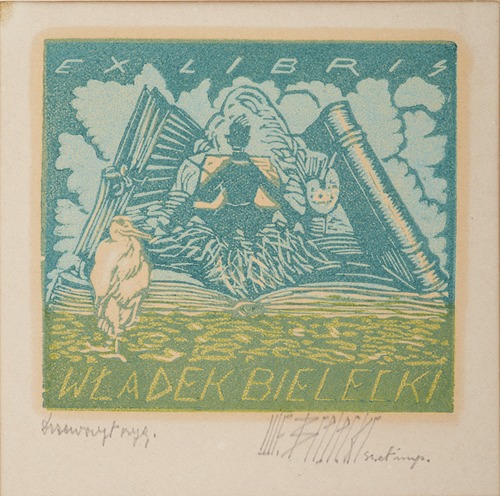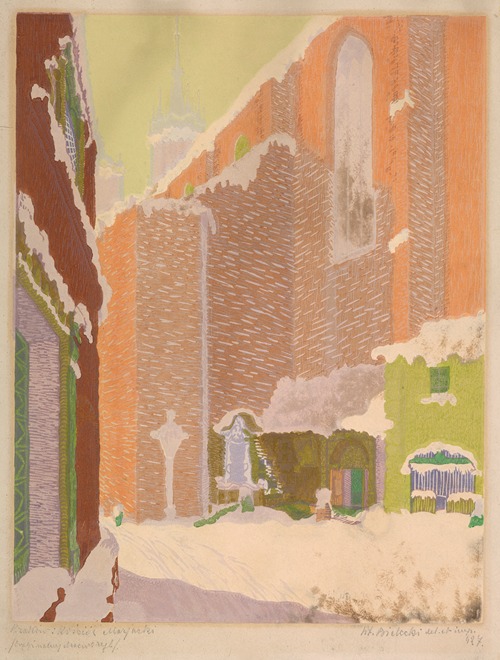

Władysław Bielecki was a Polish sculptor, woodcut artist, painter, and graphic artist.
During World War I, he fought in the 2nd Regiment of the Polish Legions. After 1918, he left for Germany, where he studied at the Academy of Fine Arts in Munich. After completing his studies, he returned to Krakow, where he became a sculpture teacher at the School of Fine Arts.
He was a master of woodcut and color linocut, creator of many bookplates, and his work was significantly influenced by Japanese woodcut artists and the Krakow school of landscape painting.
The subjects of his works were architecture, landscapes, and animals, which he created using innovative methods that experimentally showed the importance of lighting.
In 1940, he voluntarily applied for inclusion in the Volksliste, for which the Home Army sentenced him to death, which was carried out in 1942 or 1943.



